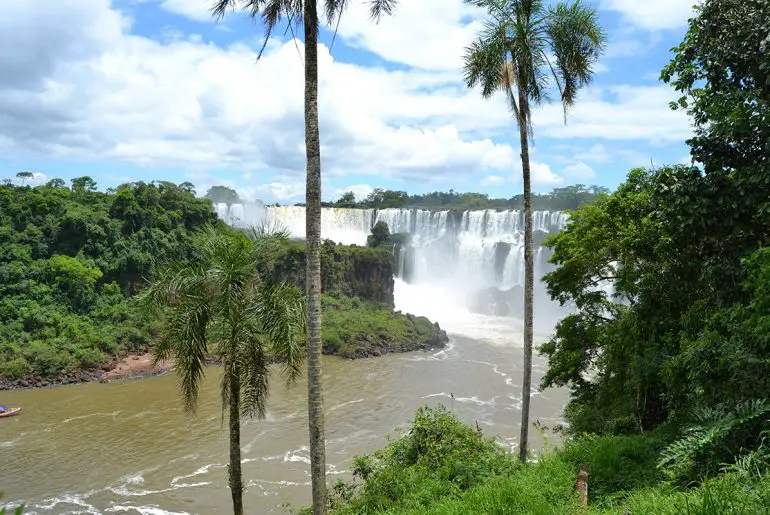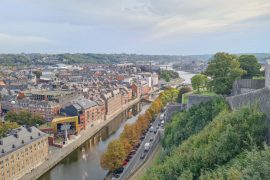Last Updated on 28.11.2024 by Iliyan
Visiting Iguazu Falls
With the exquisite waterfalls against a dense rainforest background, Iguazu Falls is one of the emblematic tourist destinations of South America. The Falls are located on the border between Argentina and Brazil and are an amazing spectacle of 275 waterfalls. The word “Iguazu” literally means “big water” and comes from the Tupi or Guarani tribes. Iguazu Falls covers over 2700 metres of length (800 metres are on the Brazilian and 1 900 on the Argentinian side). The height varies between 60 and 82 metres.
Contents
Brazilian side
After spending 3 days in Rio de Janeiro I headed to Foz do Iguaçu by internal flight. I landed early in the morning, which gave me the opportunity to have a look at the waterfalls and the Parque das Aves, after that I crossed the border and I spent the night in Puerto Iguazú, Argentina. If you are not going to stay in Foz do Iguaçu it is recommended to lock your luggage in the metal lockers, which are located right next to the central entrance of the park.
I planned a day on each side, which turned out to be just enough. The Brazilian side of Iguazu Falls takes between 3 and 4 hours. It is a long walk along the river and the gorge that reveals beautiful panoramic views.
Iguazu Falls are part of the second national park in Brazil – Iguaçu National Park, created in 1939. The park protects the rich biodiversity, comprised of exemplary species of the Brazil flora and fauna. The park was added as world natural heritage by UNESCO in 1986.
Iguazu is definitely a delight for the eyes, but also a symphony for the ears. Listening to a large amount of falling water is absolute nirvana. I had already visited some of the most beautiful waterfalls in Iceland, but they all faded in comparison to the extraordinary Iguazu. When I stood in front of the waterfalls in Brazil for the first time I remembered the famous saying of the former First lady of USA Eleanor Roosevelt, when seeing Iguazu for the first time: “Poor Niagara!”
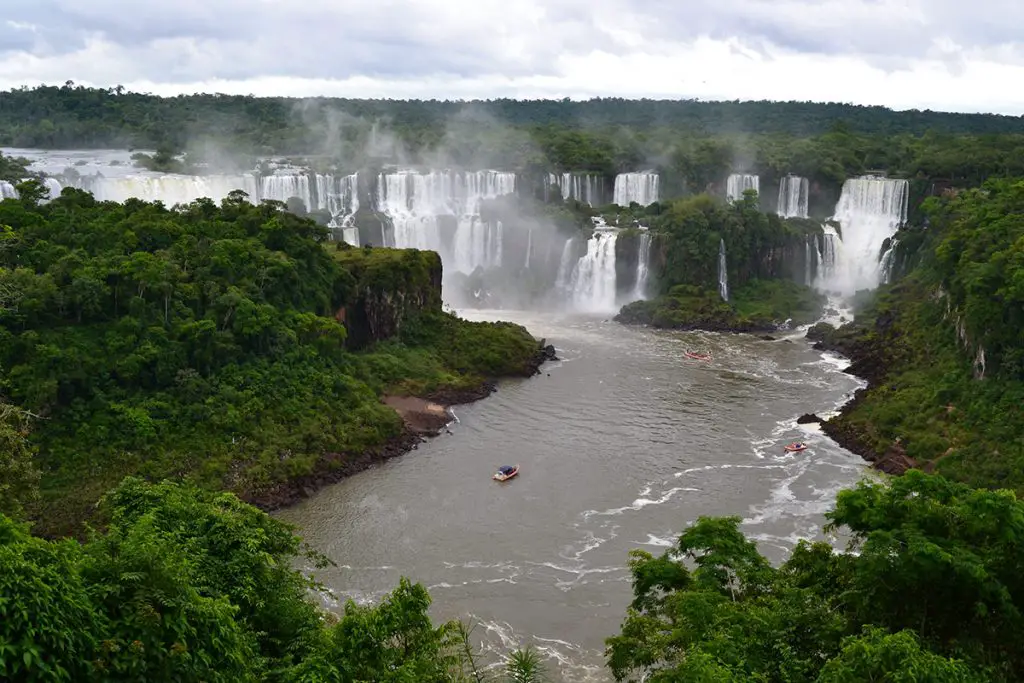
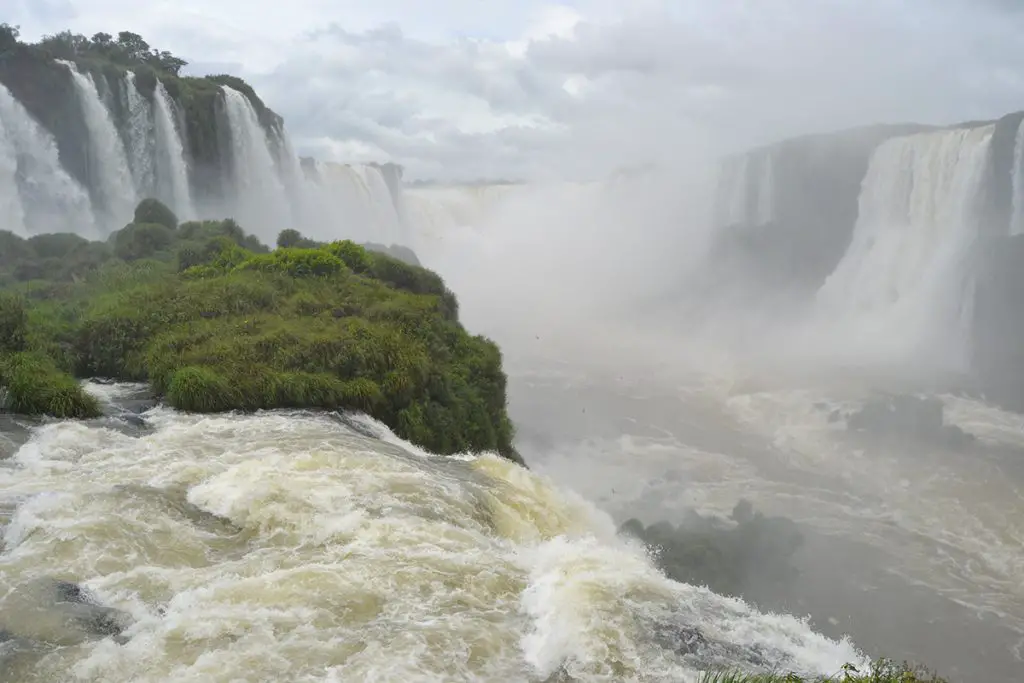
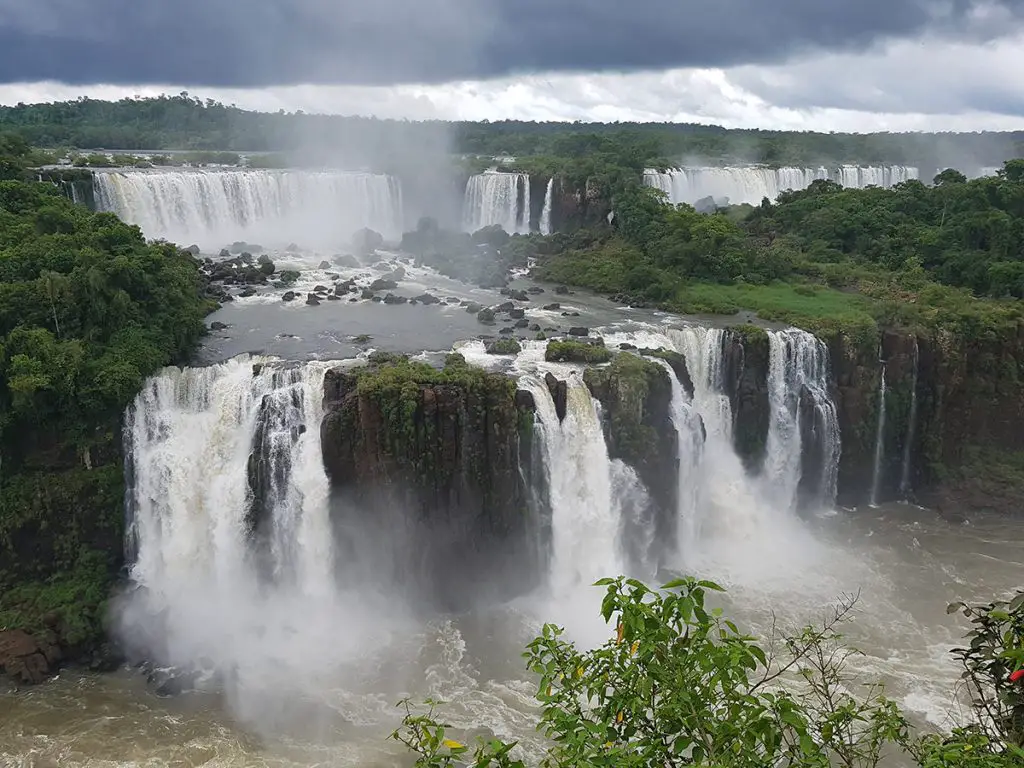
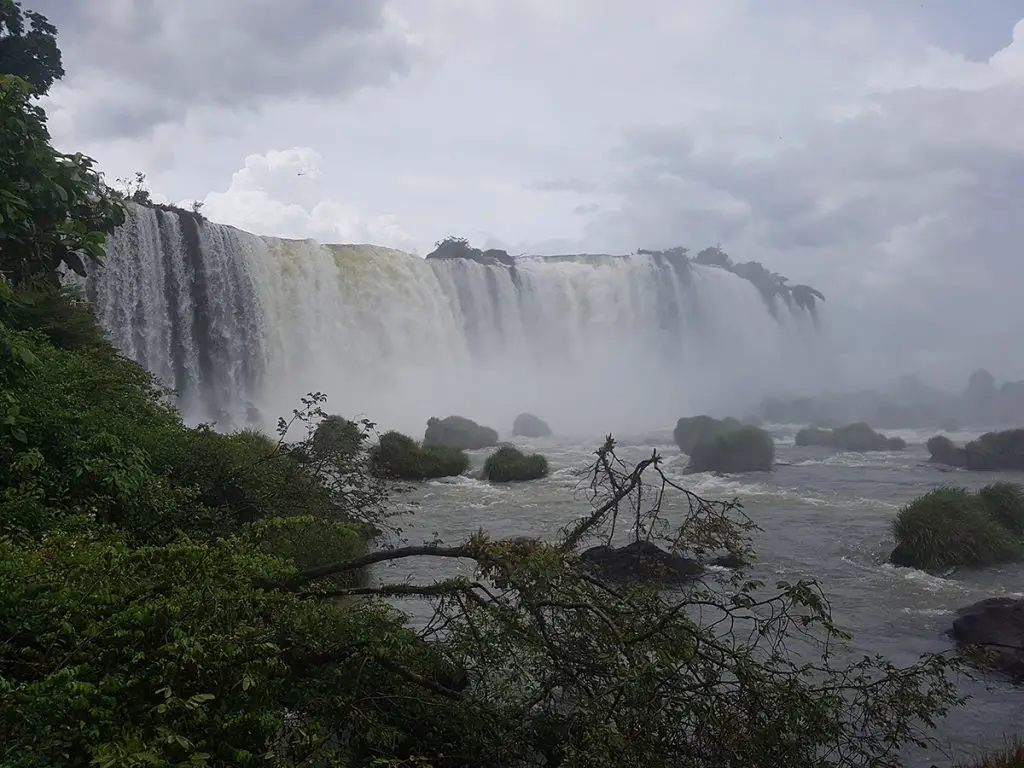
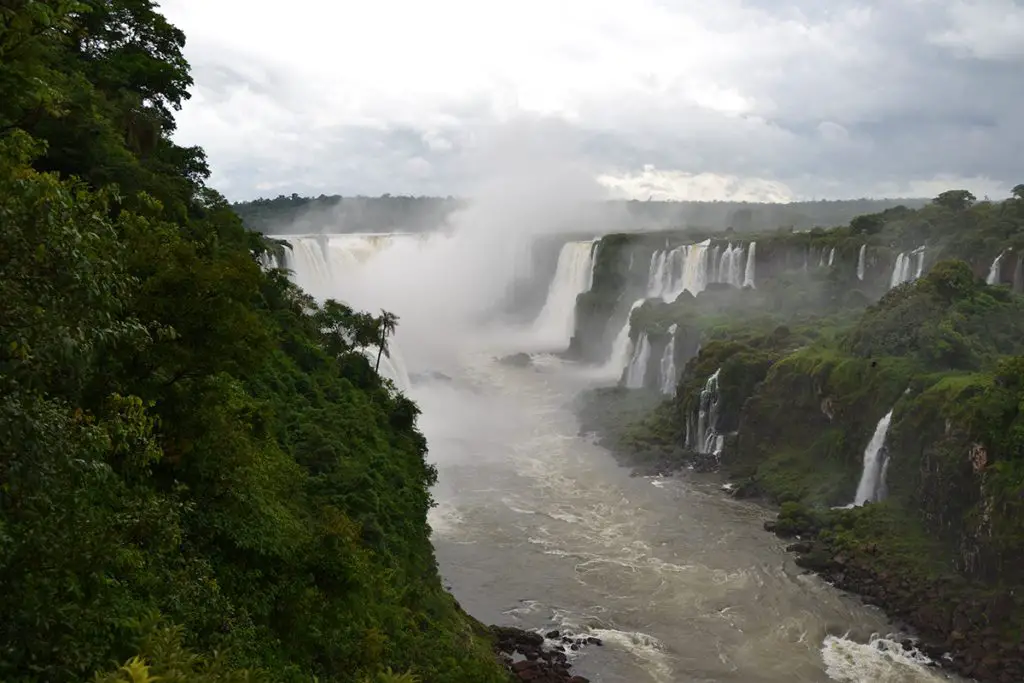

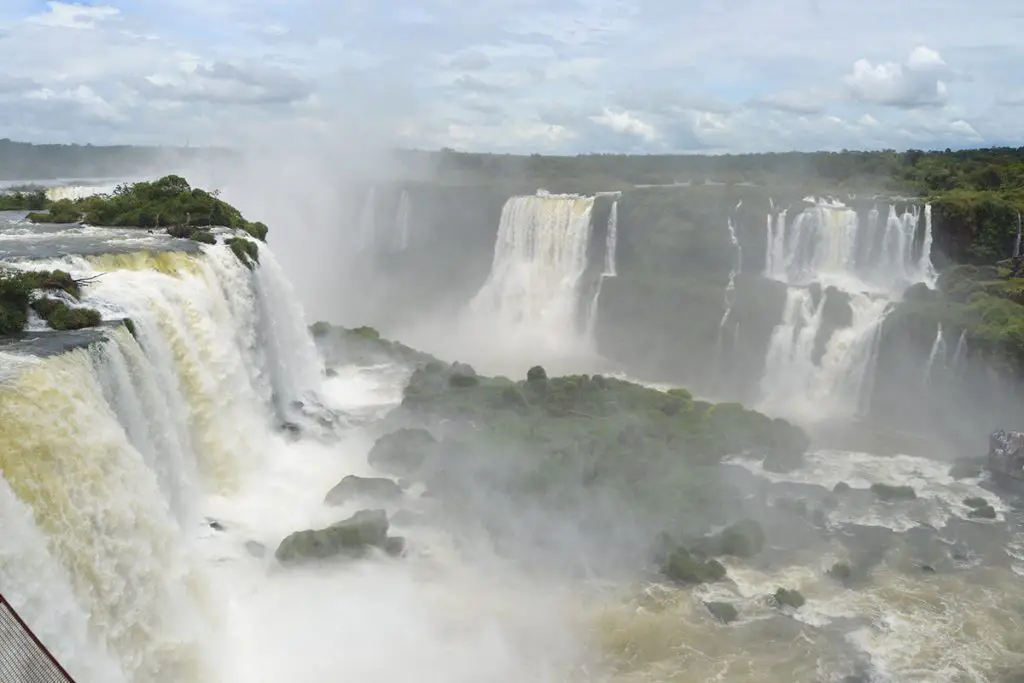
How to get there
There are some airplane companies (LATAM Brasil, Gol Airlines and Avianca Brazil), which service the Rio de Janeiro – Foz do Iguaçu route. According to your preferences you can choose an earlier or a later hour of departure. You can use bus № 120 from the Foz do Iguaçu (IGU) airport, which stops near the national park. The ticket can be purchased on the bus. There are organized tours as well, but they are more expensive.
Prices
- Iguazu National Park ticket – R$ 69 (≈ € 16-17)
- Renting a locker – R$ 30(≈ € 7)
Argentinian side
The waterfalls on the Brazilian side give a more picturesque perspective of this natural wonder from afar, while on the Argentinian side you can get closer and feel the power of Iguazu.
After entering the park, the first thing that you would need to do is take a map and get to Central Station, to get on the train to the farthest point – the Garganta del Diablo station. After a short walk to the metal bridge you can get to the Devil’s Throat.
This is the biggest attraction of the Iguazu Falls. The closer you get, the more powerful the water looks. The power of the water is grandiose. A large amount is poured down in the Devil’s Throat (Garganta del Diablo) abyss. It is 82 meters tall, 150 wide and 700 meters long. It has a distinctive U-shape. The roar is deafening and the view amazing.
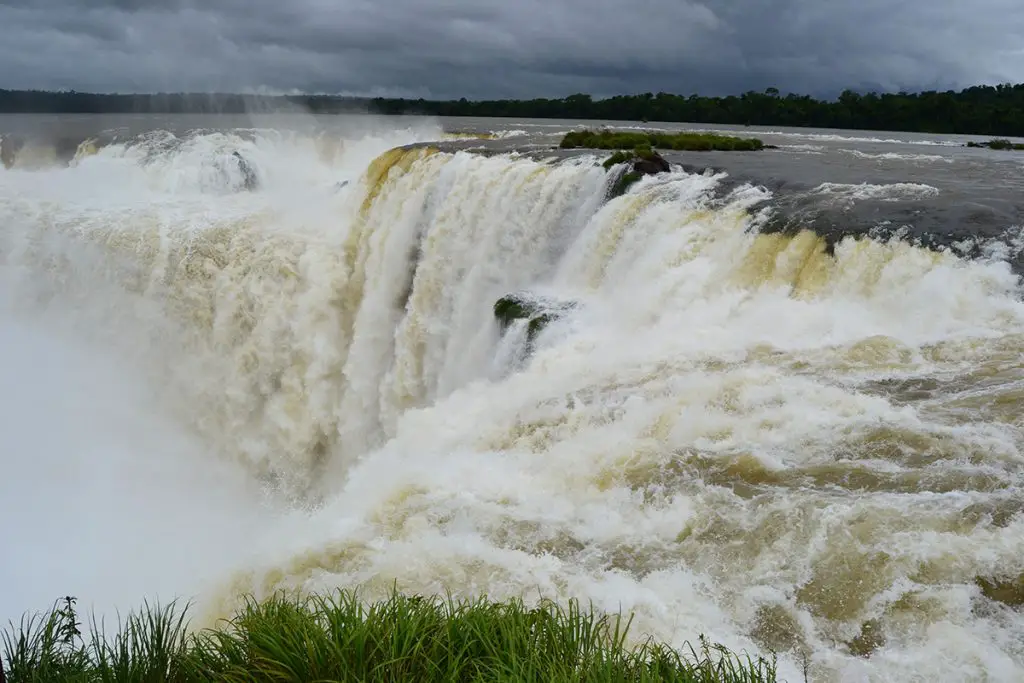
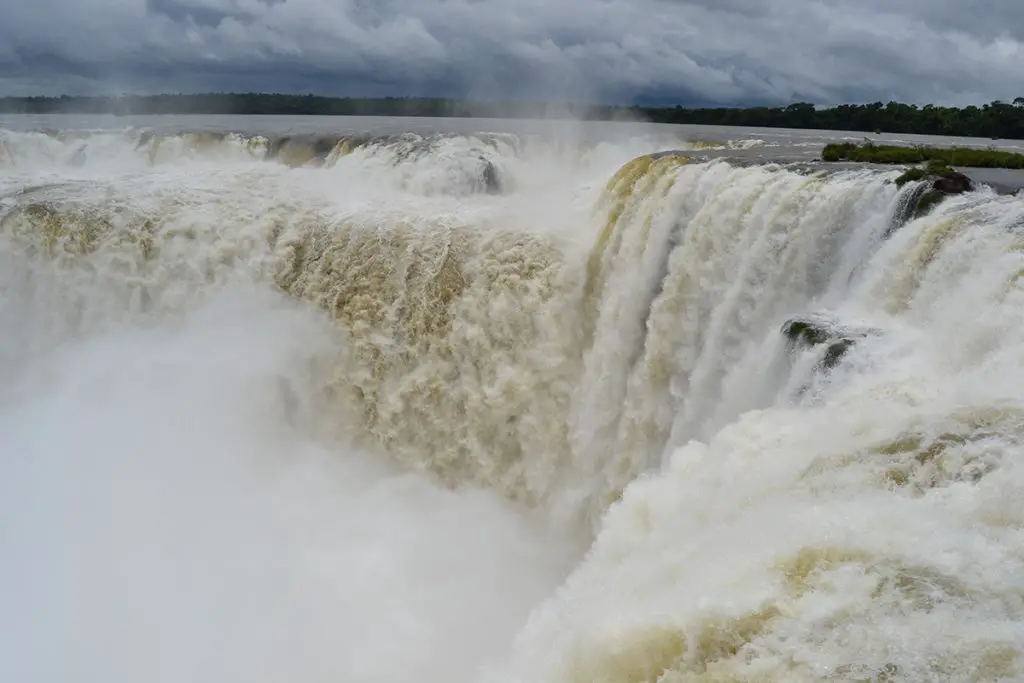
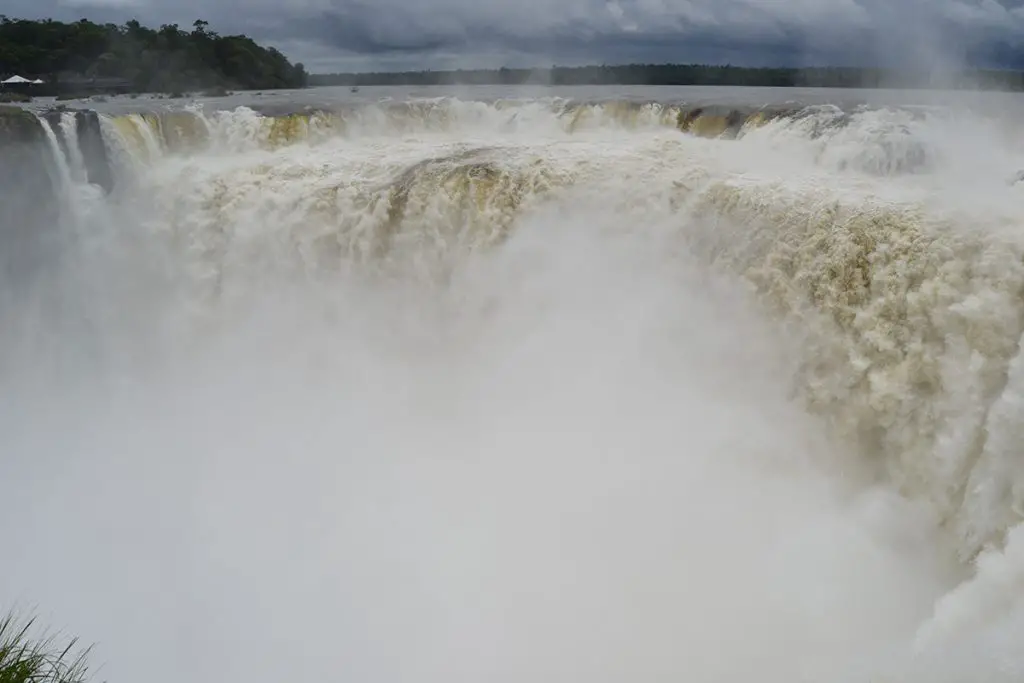
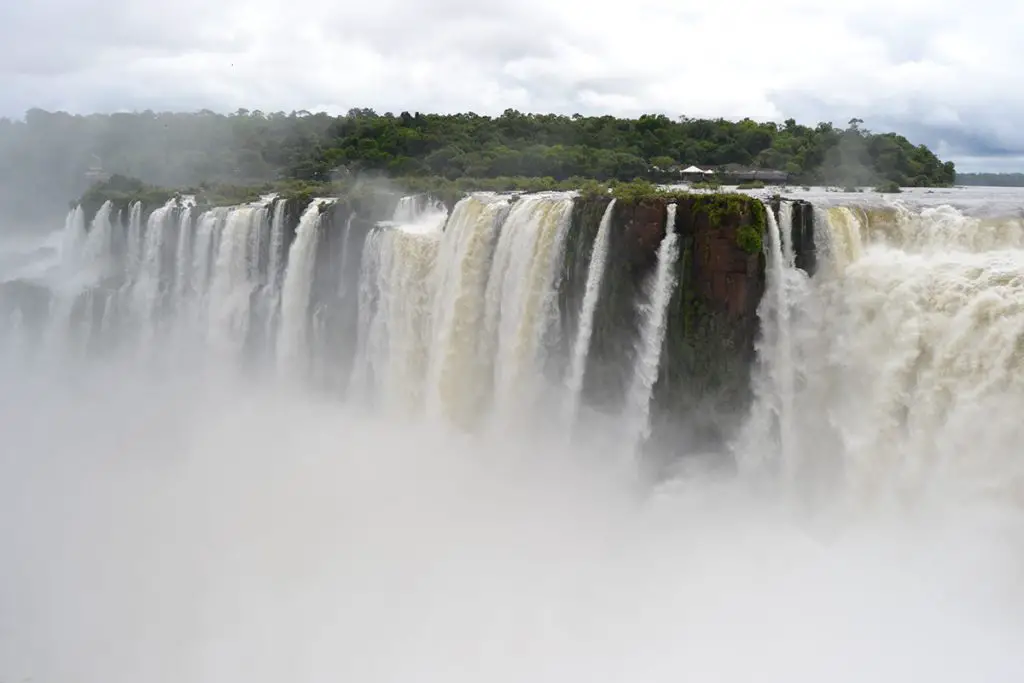
After the Devil’s Throat I went back to the middle station Cataranas Station, from where I took the Lower Circuit. It is a long shaky path through the tropical forest. The lower path offers the best views of the waterfalls from a few marked places and takes about 2 hours.
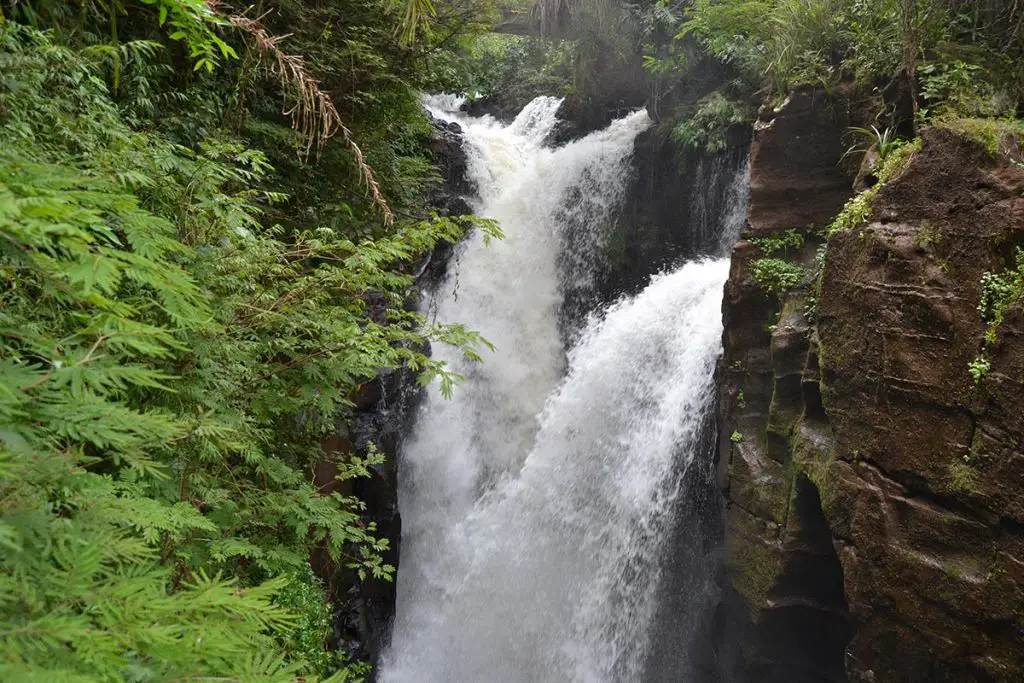
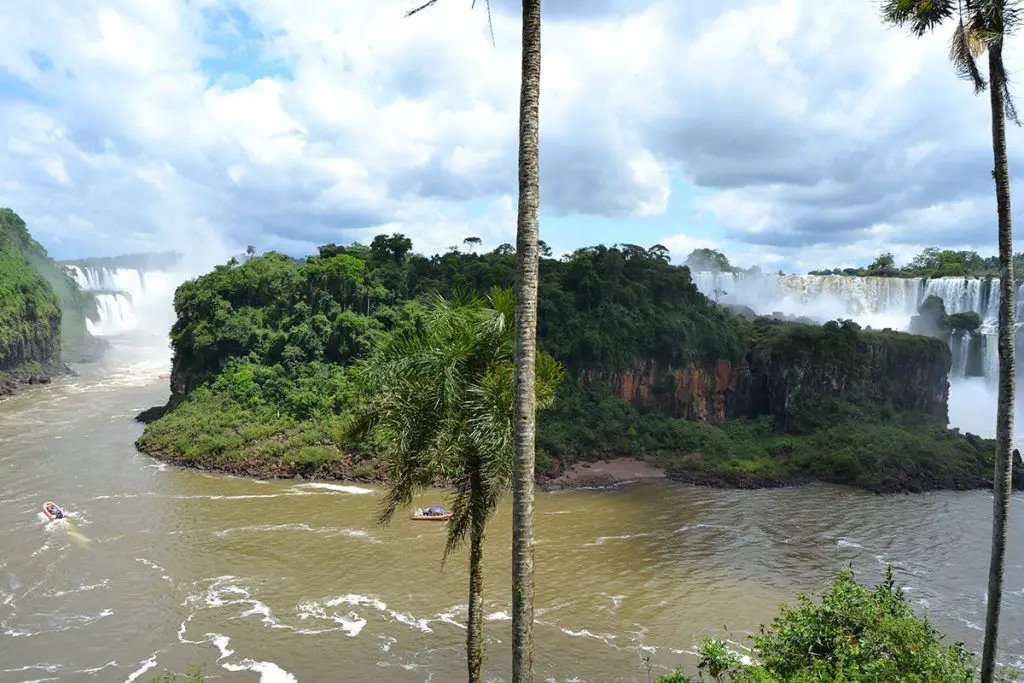
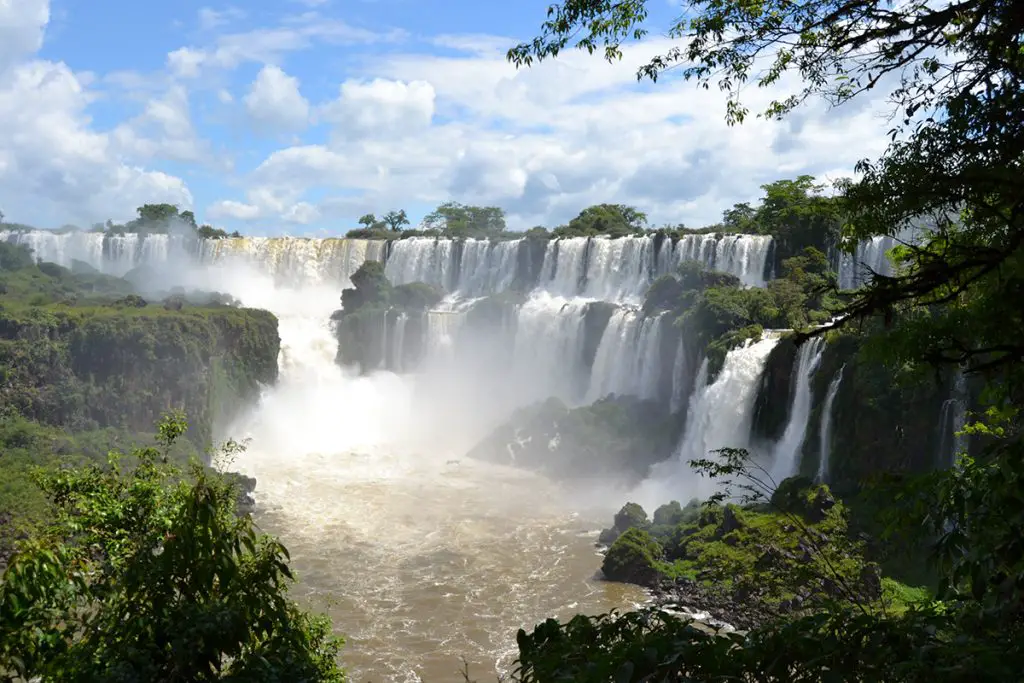
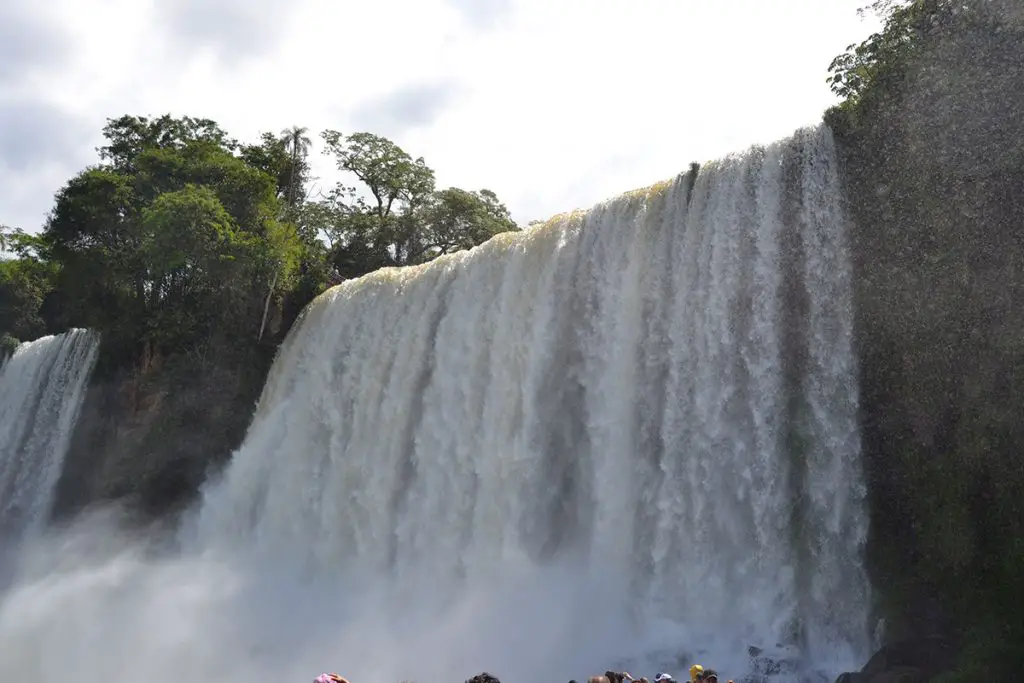
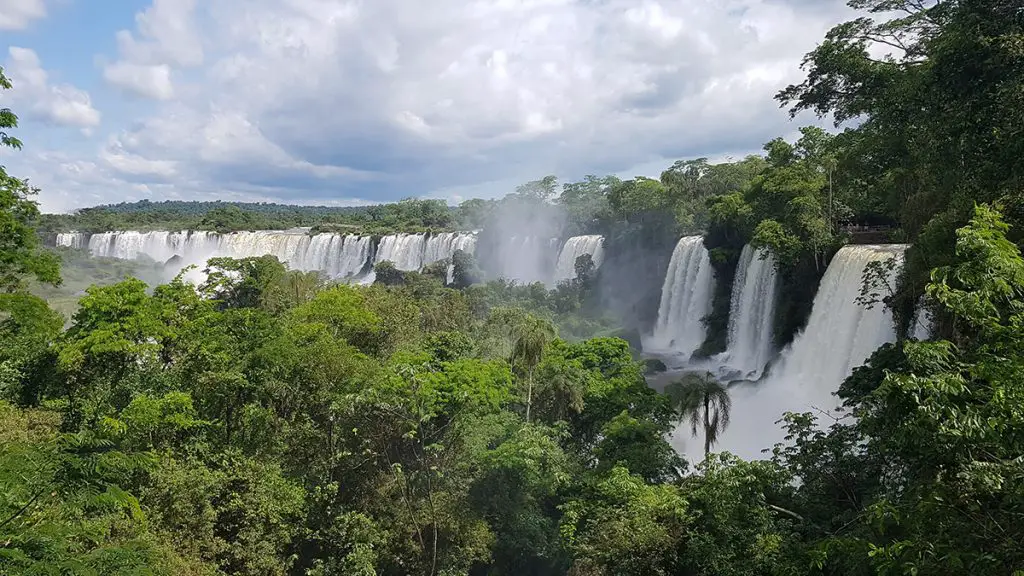
The Higher path is a combination of paths, bridges and observational platforms on the upper ridge of Iguazu Falls. It takes more than an hour of walking. From here you have the possibility of looking down on the edge of the waterfalls.
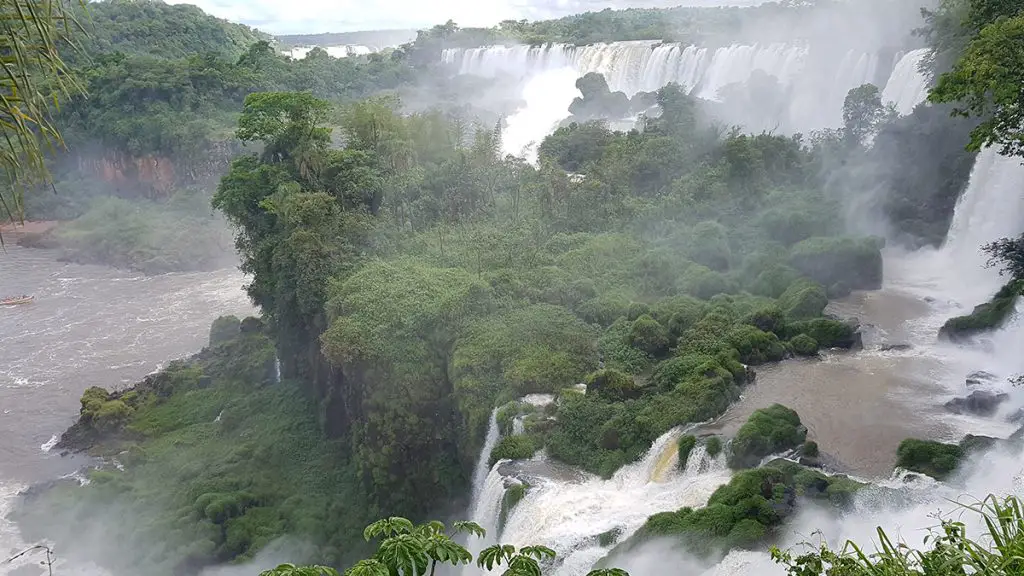
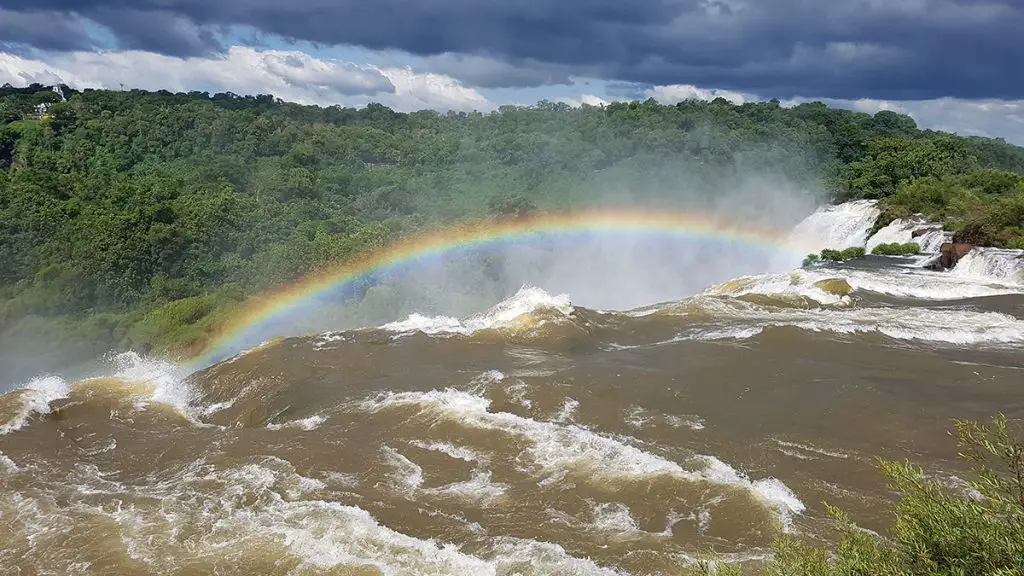
When coming back I went through a beautiful path, called Sendero Verde. It is a short cut to the exit after the upper path.
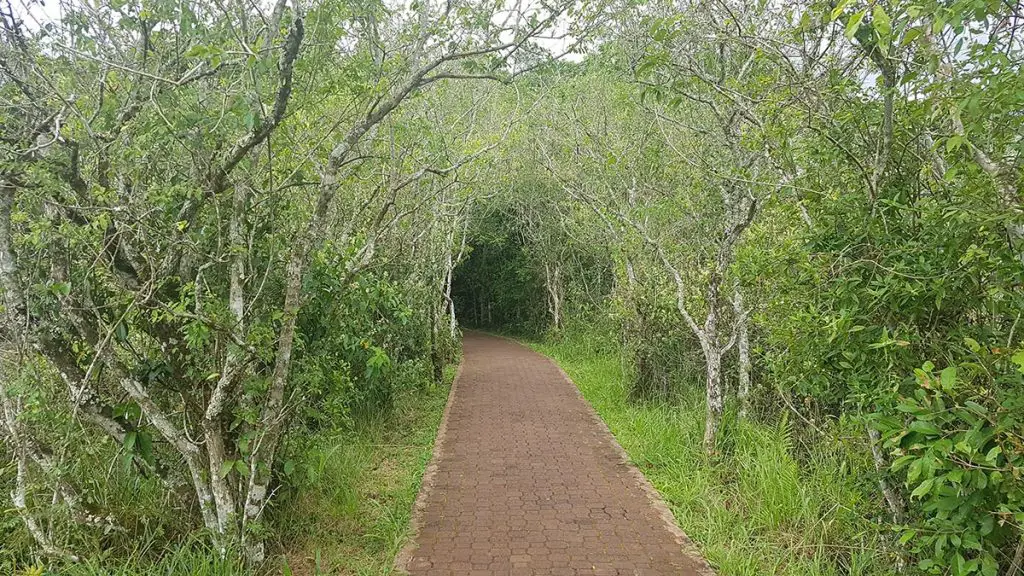
With well-constructed and curated metal and wood paths one can wander for hours in the emerald green rainforest and wonder how they managed to construct such an infrastructure. The fascinating part is that a big part of the paths are adapted for wheelchair users.
How to get from Puerto Iguazú to the falls
From the Puerto Iguazú bus terminal you would be able to see many companies that sell tickets. I used Rio Uruguay’s services. Try and catch the first busses that leave at 7 am.
The park is huge and between walking on paths you have to plan a lunch break. It is good to stock up on food in advance, because prices at the complex are pretty high, especially if you are trying to travel on a budget.
Prices
- Iguazu National Park ticket – AR$ 600 (≈ € 14)
- Return ticket Puerto Iguazú – Iguazu National Park – AR$ 260 (≈ € 6)
How much time to spend in Iguazu?
Two days are more than enough. Just in case, if you have additional time you can add an extra day in case the weather is not suitable.
The Brazilian side of the waterfalls is comprised of a path, so half a day is enough. You can combine visiting Iguazu (Brazil) and Parque das Aves. The Argentinian side contains a few different paths, so you would need a day for it.
Where to stay?
You have the option of spending the night in Foz do Iguaçu or in Puerto Iguazú. Of course everything depends on your route and your plan. I recommend staying in Puerto Iguazú, because it is significantly cheaper.
When to visit the Falls
The Iguazu Falls are in an area with subtropical climate, which leads to high temperatures during the whole year.
Probably the best time to visit is during the spring and the fall (Mart – April and August – September). During this time temperatures are very pleasant and the risk of rain is lower. Peak season is from December to February. Then a big part of Brazilians and Argentinians use their vacation time and the paths can be overcrowded. This time coincides with summer rain season with high temperatures and a high water flow rate. Depending on the amount of rain this could lead to some paths being closed.
During dry season from May to August the level of rain and the temperatures get lower, which make the area more pleasant for walks.
Visiting Iguazu Falls was an unforgettable experience. This is one of the most beautiful natural wonders, which I have ever seen. The beauty and magic of the waterfalls left me completely speechless. No wonder Iguazu heads every chart of “places to visit before you die”. It is a must to visit the waterfalls on both sides. They offer amazing views from different angles. The Brazilian part is significantly smaller, so spend more time on the Argentinian one. If you do not have enough time I highly recommend you visiting the Argentinian side.
